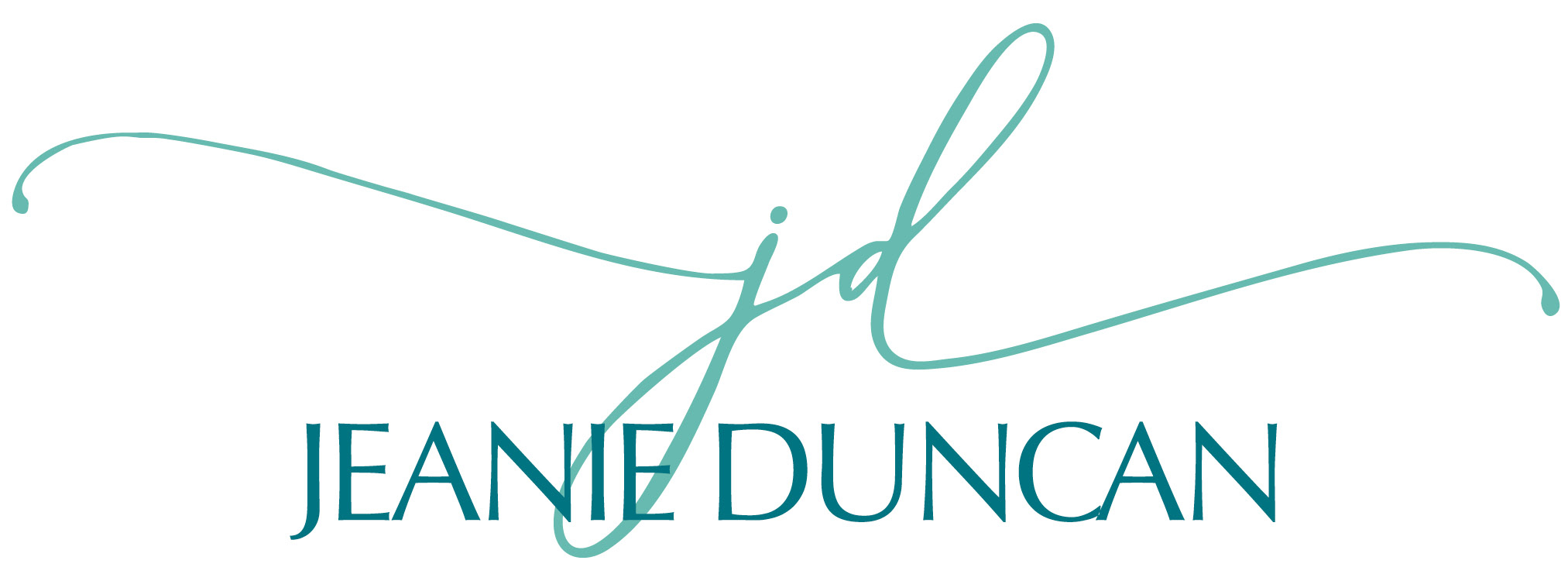
Sep 29, 2014 | Career, Coaching, Leadership

I believe deeply in the value and impact of coaching. Yet in my work, I’ve discovered that many people have never had a coaching relationship and aren’t quite sure what to expect. I would like to share more about leadership coaching, possibly dispel some myths, and offer perspective about when it might be right for you.
One way I like to think of leadership coaching as similar to how an elite athlete uses a coach. A good coach helps leaders develop clarity of purpose and focus on action. The relationship is a formal engagement in which a qualified coach works with an organizational leader in a series of dynamic, confidential sessions designed to establish and achieve clear goals that result in improved effectiveness for the individual, and often for his or her team and organization.
And to better understand what coaching is, it can be helpful to briefly highlight what coaching is not:
- Counseling or therapy, which is focused on insight into history, psychological healing, pain resolution, and coping mechanisms.
- Consulting, where a consultant offers external expertise to assess, analyze, and offer technical advice or recommendations to solve a particular problem or challenge.
- Training, with the intended outcome to impart knowledge from an expert to a student where the student gains or sharpens specific skills.
Every coaching relationship is unique due to the specific situation of the person seeking coaching and the coach’s approach. However, there are some key elements you can expect with the engagement.
Contracting – This refers to everything that’s involved in setting up the actual coaching relationship and the overall process, from when and how often to meet, whether you’ll meet in-person, by phone or other virtual platforms, to fee structure and billing, and how to handle appointment scheduling and changes.
Boundaries and Confidentiality – This includes such elements as how information is handled (confidentiality and report expectations) and how the coaching relationship fits into the existing network of relationships. Information provided by the client is kept strictly confidential except as otherwise authorized in writing by the client. For example, the coach and client may agree that the goals or results of the coaching work can be reported to his/her boss or other organizational representative. Also, the coach may support the client in preparation of reports he/she makes to a boss or other stakeholder.
Mutual Role Clarity – A primary value your coach brings is helping you decide and act more effectively, not thinking or deciding for you. Your coach will be an ally, supporter, and sounding board. You can expect him/her to be direct and honest, asking powerful questions and making empowering requests that support your desired outcome. As the client, you’ll get the most from your coaching relationship if you show up engaged, willing to examine yourself – your values, beliefs, behaviors, and impact, and are open to make changes necessary to become more effective. Its important to realize that coaching is a comprehensive process that takes time and may address any area of your life, including specific career aspirations, business projects, leadership, or personal topics such as finances, health, and relationships. Even if your coaching engagement is formed in a professional work context, you bring your full self to the experience and therefore “whole life” is taken into account.
I first hired a coach when I was considering applying for a top leadership position in my organization. I wanted to pursue the opportunity and felt I needed a partner with whom to review it from all angles – someone removed from the situation, who would ask me thought-provoking questions, and help me confirm that I was the right person at the right time.
Since that first experience, I’ve hired coaches over the years and now make it a part of my ongoing personal and professional development to retain a coach. The following are some situations where a coach can be particularly helpful:
- You and your organization are experiencing significant change and transition.
- Your organization is not growing as you believe it could.
- You’re unclear on where you need or want to be in five years.
- You’re experiencing increased complexity in your role and organization.
- You seek a confidential, safe space where you can express concerns and challenges.
- You are working too hard for the results you’re getting.
- Stress is taking toll on your health and relationships.
- You’re not spending time on the most productive tasks.
- You haven’t been able to build a great team you trust and that works well together.
- You’re not enjoying your work as much as you once did.
- You struggle with whole life balance.
Using a leadership coach as a developmental partner provides a rich opportunity to learn, reflect, change, and grow. Like any relationship, it’s important to know what to expect and to co-create a constructive alliance. Through your work together, you develop the skills, behaviors, and knowledge enabling you to increase your effectiveness.
 About Jeanie Duncan: Jeanie is President of Raven Consulting Group, a business she founded that focuses on organizational change and leadership development in the nonprofit sector. She is a senior consultant for Raffa, a national firm working with nonprofit clients to lead efforts in sustainability and succession planning, executive transition and search. Additionally, Jeanie serves as adjunct faculty for the Center for Creative Leadership, a top-ranked, global provider of executive leadership education.
About Jeanie Duncan: Jeanie is President of Raven Consulting Group, a business she founded that focuses on organizational change and leadership development in the nonprofit sector. She is a senior consultant for Raffa, a national firm working with nonprofit clients to lead efforts in sustainability and succession planning, executive transition and search. Additionally, Jeanie serves as adjunct faculty for the Center for Creative Leadership, a top-ranked, global provider of executive leadership education.

Sep 16, 2014 | Intention
 Our lives are filled with high levels of pressure and complexity. We’re faced with mounting responsibility, competing priorities, and multiple deadlines, from all areas of our life – work, family, and community. Some seem to manage it all with ease, exhibiting confidence and an outward sense of calm, while others appear anxious and visibly frustrated at every turn.
Our lives are filled with high levels of pressure and complexity. We’re faced with mounting responsibility, competing priorities, and multiple deadlines, from all areas of our life – work, family, and community. Some seem to manage it all with ease, exhibiting confidence and an outward sense of calm, while others appear anxious and visibly frustrated at every turn.
So, why are some people able to handle this level of ‘turbulence’ better than others? I believe it’s resilience – a kind of ingenuity and elasticity – where we tap into our strengths and resources and spring back. And it’s not something that comes instinctively or easily, but rather it evolves with mindfulness and practice over time.
I think of organizational leaders I know as well as families, and others in relationships – if you’re not resilient, you will struggle in fast-paced, challenging, and ambiguous situations. If you’re easily stressed and irritated you won’t perform at your best, your health may decline, and your relationships will suffer. You might think of it as personal sustainability training. The better equipped you are at handling these situations and bouncing back, the better you’ll be at sustaining your energy, enthusiasm, and passion over the long-term.
There are many actions you can take to help build resiliency. Consider the following as well as ideas of your own. Get creative and have fun with it!
Mental/Emotional
– Practice mindfulness in your day-to-day life. The more we practice being in the moment, the better able we are to show up fully for whatever comes our way.
– Come up with a mantra, a brief slogan or statement of your intentions, so that you can recall it when needed.
– Keep a collection of inspiring quotes that have meaning for you. Categorize by topic and refer to them based on your situation. Here’s a good one: “The greatest glory in living lies not in never falling, but in rising every time we fall.” – Nelson Mandela.
– Listen to some of your favorite music to help shift and ignite your energy and mindset.
– Take several deep, cleansing breaths. Breathing in and out in an intentional, invigorating way can help you center, reset, and recharge.
Physical
– Take action. When you feel overwhelmed, it can help to break a large task or project down into smaller pieces and take a concrete step forward to make progress or improve the situation.
– Engage your physical strength through things like working out at a gym, going for a walk in nature, or attending a yoga class. Nothing helps me more than a long trail run in the woods – I love the smells, sounds, and physical endurance of running for an hour or more.
– If you have a meeting at work, ask your colleague(s) to go for a walking meeting. The movement helps open up thoughts and ideas.
– Pay attention to your nutrition and eating habits. Eat well to “fuel” yourself adequately for optimum performance.
– Get plenty of rest and down time. Taking a brief “time-out,” such as a long lunch or an afternoon off can offer just the reset we need. One of my favorites is visiting an art gallery in between meetings or after work.
Spiritual
– Engage in a spiritual and/or religious practice such as meditation or prayer. Taking the time to get quiet and turn your attention inward can reconnect you with what feels sacred and grounding. Sometimes I’ll steal away brief moments for a quick meditation when stuck in traffic, at a stoplight, or while waiting in line. It reframes a frustrating moment into a Zen moment. Try it sometime!
– Write down the core of your spiritual values and beliefs. Then write a spiritual reminder (a short phrase representing your beliefs, meaning, and purpose of life) that can help you recall your beliefs when facing adversity.
– Read inspirational materials as a way of taking in quick doses of positivity (check out sites like DailyOM.com and dailygood.org). I subscribe to a couple of these and enjoy reading them as I start my day.
Social
– Build a diverse and broad network including personal friends, work colleagues, faith and community connections. Reach out and engage regularly; you’ll be amazed at what transpires from the interaction.
– Make connections with other individuals and groups, such as participating in a club or small group activity.
– Boost the resiliency of someone else. Sometimes the best way to reconnect with our own strength is to support someone else with care and encouragement.
– Think of someone you know who exudes resiliency. It can help to access an example as we attempt to connect with our own inner strength. Personally, I have a couple of women business owners that I get together with frequently and seek their wisdom and insight on all kinds of issues and challenges.
– Develop your own personal ‘board of directors’ – people that positively influence and support you.
What are some of your ideas and actions for practicing resiliency?
Read other related blog posts:
10 Ways to Build Resilience
 About Jeanie Duncan: Jeanie is President of Raven Consulting Group, a business she founded that focuses on organizational change and leadership development in the nonprofit sector. She is a senior consultant for Raffa, a national firm working with nonprofit clients to lead efforts in sustainability and succession planning, executive transition and search. Additionally, Jeanie serves as adjunct faculty for the Center for Creative Leadership, a top-ranked, global provider of executive leadership education.
About Jeanie Duncan: Jeanie is President of Raven Consulting Group, a business she founded that focuses on organizational change and leadership development in the nonprofit sector. She is a senior consultant for Raffa, a national firm working with nonprofit clients to lead efforts in sustainability and succession planning, executive transition and search. Additionally, Jeanie serves as adjunct faculty for the Center for Creative Leadership, a top-ranked, global provider of executive leadership education.
photo credit: Seaweed Lady {cory} via photopin cc

Sep 2, 2014 | Intention
I remember elementary school and “field day” each year in the late spring. I looked forward to it with great anticipation. We’d have team relay races – three-legged, potato sack, egg-and-spoon – and then the best event of all…tug of war.

We’d grab the rope with our sweaty fists, grit our teeth, dig our heels in, and go to it. Tugging ferociously to and fro, sometimes the battle was quickly won and other times it seemed to go on forever until one team succumbed to the other, often getting drug to the dusty ground and across the line.
I may have liked this challenge on the playground, but it certainly is not the experience I want coming alive in my real life. Yet, sometimes it happens – mostly when I’m torn between competing priorities of work, family, community, and self. I feel “up against it” trying to manage and balance the many priorities and expectations.
Much like Elizabeth – the nonprofit executive portrayed in the attached article “Yes, You CAN Balance Work and Family Roles” – I experience the tension between consuming work responsibilities and my other life roles. This was especially true for me while serving in various leadership roles in the nonprofit sector, most recently as President & CEO of an arts council.
Early on in that position, I didn’t know any other way to be than “always on.” I thought, “If I’m not thinking about the organization, who is?” I constantly assessed, planned, strategized, and engaged my team and stakeholders. I knew the importance and necessity of being the face of the organization, a presence at local arts and cultural events during evenings and weekends, and “at the table” with other critical community leaders.
At home, I had a 4-year-old son, a spouse with an equally demanding career, and aging parents that needed my increasing attention and support. For years, I served in this complex and demanding role, often recalling the field day memories of tugging to meet all the demands while aiming for balance among my life’s personal and professional interplay.
Nearly a decade later, I completed my tenure with the organization. Between leaving that post and starting my own business, I decided to take a sabbatical. I wanted to clear my head, explore creative pursuits, and allow myself the space and time to renew my energy, be with friends and family, and shape what would come next.
During this time off, I learned that, while successful, the way in which I led was not a sustainable practice. Going forward, I committed to living a more realistic pace, adjusting my expectations of myself (and others), and more fully honoring my core values.

Courtney Welch, Inspired by Movement
For me, work-life balance is more about creating and managing flow than literally attempting to divide up and assign the number of hours in a day to the important activities of life. If something I’m doing has positive impact and gives me energy, then I have this sense of resonance and ease – regardless of the actual hours I’ve spent doing it. My life feels aligned, or “in balance.” This allows me to channel that energy into taking care of what’s important to me – both at work and outside of work.
Finding a workable approach to life is critical and can benefit your well-being, relationships, and the organization you serve. This article – “Yes, You CAN Balance Work and Family Roles” – offers five steps that can help you start today to create a more fulfilling life for yourself. We’d love to hear what’s working for you to create work-life balance.
Read other related blog posts:
I Got This! Creating a Life of Choice, Resonance, and Flow
 About Jeanie Duncan: Jeanie is President of Raven Consulting Group, a business she founded that focuses on organizational change and leadership development in the nonprofit sector. She is a senior consultant for Raffa, a national firm working with nonprofit clients to lead efforts in sustainability and succession planning, executive transition and search. Additionally, Jeanie serves as adjunct faculty for the Center for Creative Leadership, a top-ranked, global provider of executive leadership education.
About Jeanie Duncan: Jeanie is President of Raven Consulting Group, a business she founded that focuses on organizational change and leadership development in the nonprofit sector. She is a senior consultant for Raffa, a national firm working with nonprofit clients to lead efforts in sustainability and succession planning, executive transition and search. Additionally, Jeanie serves as adjunct faculty for the Center for Creative Leadership, a top-ranked, global provider of executive leadership education.

Mar 18, 2014 | Leadership
 Authenticity is not something we have or don’t have. It’s something we practice – a conscious choice each day of how we want to live, show up, and be real in who we are. It’s about letting our true selves be seen. And for me, it can feel resonant, exhilarating, and terrifying all at once.
Authenticity is not something we have or don’t have. It’s something we practice – a conscious choice each day of how we want to live, show up, and be real in who we are. It’s about letting our true selves be seen. And for me, it can feel resonant, exhilarating, and terrifying all at once.
When I think about authenticity, I think about how we are drawn to deeply real people. In my work as a leadership development educator and facilitator, I often see this in the classroom. Just the other day, my co-facilitator was delivering a part of our program on organization change. He shared a personal story about leading a major change initiative for an international Fortune 100 company. As the group listened, I imagined that some fully expected an account of how well it went – of how he did all the right things, executed critical steps in perfect text-book form, and everyone came along with the change.
While some things did go well, much of what he shared was about the missteps…of what went wrong, what he wish he’d done differently, and what he learned from the complex navigation of change across a large global company with competing divisions, goals, and priorities.
What I witnessed in our participants was a building in the level of engagement, belief, and trust. This guy could have told his story so differently. He could have pointed out the positives and insulated himself and his leadership by jumping over the tough spots and failures. To do so would have created a divide with the participants and resulted in a missed opportunity to connect and exhibit vulnerability.
Before writing this post, I reviewed in my mind the characteristics I’ve observed in the most authentic people I’ve met. Most of the qualities come directly from being rather than doing. Here’s my list:
- Knowing yourself and being comfortable in your own skin
- Being vulnerable – Letting go of what people think and embracing who you are
- Having courage – Being willing to move out of your comfort zone, take risks, and play it unsafe
- A willingness to admit to and learn from failure
- Being honest – Choosing being real over being liked
- Compassion
- Gratitude
- Expressing your own creativity
What characteristics make your authenticity list? How do you recognize if you are accessing your own authenticity?
“To be nobody-but-yourself in a world which is doing its best, night and day, to make you everybody-but-yourself means to fight the hardest battle which any human being can fight – and never stop fighting.” E. E. Cummings
photo credit: Ara Pehlivanian via

Mar 11, 2014 | Leadership, Transition & Change
In my latest blog post (“Leading with Compassion and Authenticity,” February 18) I wrote about a favorite leadership book, “Leading with Authenticity in Times of Transition” by Kerry Bunker and Michael Wakefield. As a continuation of that post, I want to share the specific leadership competencies highlighted in the text that are critical for leaders navigating the complex challenges of transition. These competencies are presented as pairs (representing both the structural and people side) and graphically displayed as a wheel to demonstrate their interrelatedness and the need for balance.

Bunker and Wakefield use the image of a bicycle wheel to describe the leadership competencies, reflecting that each spoke needs to be tightened or loosened to the right tension. Otherwise, there will be strain on the other spokes, pulling the wheel out of alignment. Six spokes represent the structural competencies, and six the people-related competencies. If a leader devotes an overabundance of energy to any one competency, s/he runs the risk of skewing the opposite and pushing the wheel out of true, creating undue strain on the trust needed to lead effectively. The key is to find appropriate ways to work with both sides that are authentic to the leader and avoid swinging dramatically from one side to the other.
I find this resource very helpful in conceptualizing the core elements important to navigating change and transition as well as the need for balance among them. Most leaders are quite skilled at dealing with change and solving problems from the structural side of leadership – the plan, rationale, data, and measurements. Posing a much greater challenge for most is connecting to the people side of change – the emotions, discomfort, letting go, and rebuilding. Central to it all is trust, without which success in transition cannot exist.
Consider this example: A nonprofit arts organization had recently undergone a strategic planning process that included extensive community input data gathering. This led to a reshaping of priorities and key areas of focus for the organization, which re-defined its core lines of business. As a result, the organization ceased two primary areas of its operation. From this redefining, the organization aligned its leadership, resources, business strategy, and culture to support this new model. Among other things, the action led to a redesign and reduction in both board and staff leadership. By any measure, this was substantial change to this agency.
A true test for the organization was how it dealt with the more emotional side of the human elements of transition. While they handled the mechanics of the change well: strategy, planning, gathering community input, and defining core areas of focus and lines of business, the organization fell short in leading the more human dynamics of the transition: allowing for time and space for emotional processing, feeling discomfort, dealing with resistance, and appreciating differences in how people cope with change and taking those perspectives into account.
I see this frequently with the organizations and executives with whom I work. Strategic planning processes like these take a lot of time, effort, and energy. When a plan is done, it’s easy to feel like you’ve reached the finish line. It’s much harder to realize you’re only half or two-thirds finished, and that a critical component of your work is yet to be done – addressing the more sensitive people issues and empowering a team to embrace the change and help shape and lead the future.
As Bunker and Wakefield note, “change initiatives often break down because people stall somewhere during the transition.” Ignoring or falling short in this area will greatly impact the overall success of a transition. With the organization example above, the ‘less than ideal’ handling of the human elements created a turbulence that was felt for years after. These missteps are painful to recover from.
A highly skilled leader lives through the process of transition with others in a genuine and authentic way. They help their people flex and adapt, and foster their ability to contribute in new and meaningful ways. Here’s an overview of the twelve competencies:
Catalyzing Change versus Coping with Transition
Catalyzing Change is championing an initiative or significant change. A leader who is skilled at catalyzing change consistently promotes the cause, encourages others to get on board, and reinforces those who already are. Such leaders are highly driven and eager to get others engaged in new initiatives.
Coping with Transition involves recognizing and addressing the personal and emotional elements of change. Leaders who are able to cope with transition are in touch with their personal reactions to change and transition and make use of that emotional information. They lead by example.
Sense of Urgency versus Realistic Patience
Sense of Urgency involves taking action quickly when necessary to keep things rolling. Leaders who have a strong sense of urgency move fast on issues and accelerate the pace for everyone. They value action and know how to get things done.
Realistic Patience involves knowing when and how to slow the pace to allow time and space for people to cope and adapt. Leaders who display realistic patience appreciate the fact that people learn and deal with change differently and do not judge them based on their own styles, preferences, or capabilities.
Being Tough versus Being Empathetic
Being Tough denotes the ability to make difficult decisions about issues and people with little hesitation or second-guessing. Leaders who are comfortable and secure with themselves can display toughness; they’re not afraid to take a stand in the face of public opinion or strong resistance.
Being Empathetic requires taking others’ perspectives into account when making decisions and taking action. Empathetic leaders try to put themselves in other people’s shoes; they’re able to enhance their own perspectives by considering the views of others.
Optimism versus Realism and Openness
Optimism is the ability to see the positive potential of any challenge. Leaders who exude optimism can communicate and convey that optimism to others.
The combination of Realism and Openness denotes a grounded perspective and a willingness to be candid. Leaders who practice this competency are clear and honest about assessing a situation and the prospects for the future. They are candid in communicating what is known and not known. When managers exhibit realism and openness, they speak the truth, don’t sugarcoat the facts, and are willing to admit personal mistakes and foibles.
Self-Reliance versus Trusting Others
Self-Reliance involves a willingness to take a lead role and even to do something yourself when necessary. Self-reliant leaders have a great deal of confidence in their skills and abilities and are willing to step up and tackle new challenges.
Trusting Others means being comfortable with allowing others to do their part of a task or project. A leader who trusts others is open to input and support from colleagues and friends. Such leaders respect others and demonstrate trust through a willingness to be vulnerable with them.
Capitalizing on Strengths versus Going Against the Grain
Capitalizing on Strengths entails knowing your strengths and attributes, and confidently applying them to tackle new situations and circumstances. A leader who knows how to capitalize on strengths trusts the abilities that have generated success, rewards, recognition, compliments, and promotions in the past and uses them in new situations.
Going Against the Grain entails a willingness to learn and try new things, even when the process is hard or painful. Leaders who can go against the grain are willing to get out of their comfort zones. They are willing to tolerate discomfort if it leads to learning.
I don’t know about you, but when I read these competencies, I see that there are some inherent conflicts between them. In the face of change and turmoil, it’s interesting that people look for those who are simultaneously strong and vulnerable, heroic yet open, demanding while compassionate. Leading well often feels like an impossible balancing act. It can be exhausting!
For me, I think it’s most about knowing yourself as a leader. Knowing what is genuinely, authentically you and applying that consistently and well over time. And when you have those critical learning moments, take the new discoveries and further polish and refine your leadership skills.

photo credit: left-hand via photopin cc

 About Jeanie Duncan: Jeanie is President of Raven Consulting Group, a business she founded that focuses on organizational change and leadership development in the nonprofit sector. She is a senior consultant for Raffa, a national firm working with nonprofit clients to lead efforts in sustainability and succession planning, executive transition and search. Additionally, Jeanie serves as adjunct faculty for the Center for Creative Leadership, a top-ranked, global provider of executive leadership education.
About Jeanie Duncan: Jeanie is President of Raven Consulting Group, a business she founded that focuses on organizational change and leadership development in the nonprofit sector. She is a senior consultant for Raffa, a national firm working with nonprofit clients to lead efforts in sustainability and succession planning, executive transition and search. Additionally, Jeanie serves as adjunct faculty for the Center for Creative Leadership, a top-ranked, global provider of executive leadership education.








